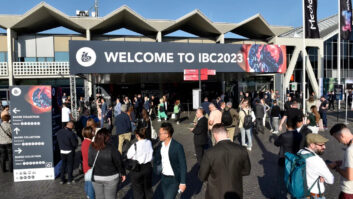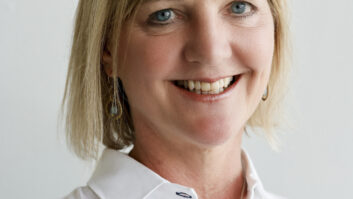
ALC NetworX – Ravenna
Open standard for real-time distribution of audio and other content over IP-based networks. It makes use of existing standards, such as RTP, RTCP and UDP, is efficient, flexible and customisable. “IP-based solutions have become a serious option for the transfer of control and audio signals. Ravenna opens new horizons for stretching out Lawo’s networking technology for mixing consoles and routing systems onto an IP-based platform,” commented CEO Philipp Lawo. Ravenna “has all the right ingredients to become the dominant IP standard in the broadcasting and recording industries. Among its most striking features is sub-sample synchronization accuracy throughout even the largest networks, whilst maintaining ultra-low latency. The ability to scale that technology from just one or two audio channels up to several hundred fully redundant channels on a robust, Layer 3 based protocol further contributed to our decision to adopt Ravenna as our primary core I/O and control technology for the future,” added Claude Cellier, CEO, Merging Technologies.
ravenna.alcnetworx.com/
EBU – Loudness recommendation R128
Viewers hate having to constantly alter audio levels when they switch between channels, or even just when the commercials come on. This new recommendation is being built into audio equipment from more than 20 manufacturers, and will be adopted by German-speaking broadcasters in Austria, Switzerland and Germany next year. Instead of just measuring peaks to ensure signals aren’t clipped, it measures the average loudness so that each channel should be perceived as being similarly loud.
tech.ebu.ch/loudness
Jünger – T*AP audioprocessor
It can handle all requirements for 5.1 audio processing and conditioning on the station output, including loudness control (to Rec 128), Dolby decoding and encoding including metadata verification, and embedded 3Gbps audio. “We are using adaptive controlled algorithms, meaning it is very easy to use. It is a set and forget operation,” said MD, Peter Pörs (pictured). It will cost €6,490 for a basic system (which can take a variety of cards, such as SDI or Dolby).
www.junger-audio.com
Lawo – Sapphire
This production console fills the gap between Lawo’s radio products and its large production consoles, and is aimed primarily at OB and small studio use. “The frame can have from four to 40 faders, but can handle a lot more inputs (up to 384 I/O), and you can assign any input to any fader,” said sales and project manager, Klaus-Jörg Jasper (pictured). It can handle 5.1 audio, embedder/de-embedder cards, multiple mic/AES lines, MADI, MIDI and GP I/O for audio follows video to interface to a vision mixer. It is also compatible with Ravenna audio-over-IP networking.
www.lawo.de
Sennheiser – Frequency Finder
This is a useful, free iPhone app (covering the BeNeLux area initially, but adding other countries soon), which will show what frequencies can be used for wireless equipment (including what presets are usable with specific Sennheiser models). It uses the phone’s GPS to show what’s available where you are. The information is also available on its web site, covering the whole world, but the iPhone app doesn’t need internet access.
www.sennheiser.com
http://frequencyfinder.eu/
Sound Devices – USBPre 2
This “substantial upgrade” to its $650 high-resolution audio interface for computer recording takes it to 114dB of dynamic range (up from 103dB), and adds numerous features, such as extended bandwidth, new microphone pre amps, import limiters, full 23-segment LED peak VU meters, and balanced XLR outputs. “It can also operate as a stand-alone pre amp, or A/D or D/A converter, just plug in any USB power source,” said international sales manager Ed Capp (pictured).
www.sounddevices.com
SSL – MADI-X8 + SDI-MADI
MADI is undergoing a resurgence at present. The MADI-X8 router/splitter/aggregator has six fibre and two copper ports, a 512×512 crosspoint matrix, and is controllable using a Java app via Ethernet. The neat bit is its ability to choose any channels from each 64-channel stream and place them in a new 64-channel multiplex. It costs £2,250. The £6,600 SDI-MADI de-embedder “will strip 16 channels out of each audio input, has a sample rate converter, and puts it out to fibre MADI and AES at the same time,” explained head of marketing, Dan Duffell (pictured).
www.solidstatelogic.com
Zaxcom – TRX900LTS
This small, wearable wireless transmitter has two microphone inputs and allows independent digital transmission of two isolated audio channels on a single RF carrier, giving a stereo image from the talent. It also has an internal timecode-referenced back-up recorder using an SD card and 96-hour, 24-bit internal recorder, to avoid audio loss due to interference or signal dropout. It operates for up to six hours on a single AA lithium battery.
www.zaxcom.com







